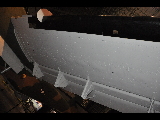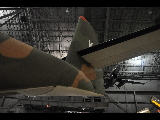|
De Havilland C-7A (62-4193) Caribou Walk Around Page 1

Any questions, comments, or problems, please
email me.
These pictures were taken and shared with the web by
Weichao Chen
.
The C-7A was a twin-engine, short takeoff and landing (STOL) utility transport built by De Havilland Aircraft of Canada, Ltd. It was used primarily for tactical airlift missions from short, unimproved airstrips in forward battle areas. It could carry either 26 fully equipped paratroops, 20 litter patients, or more than three tons of equipment.
The Caribou made its first flight in 1958, and the U.S. Army flew several prototypes for evaluation. In 1961 De Havilland delivered the first 22 out of a total of 159 C-7s to the Army. Originally designated AC-1, the aircraft was redesignated CV-2 in 1962, and it retained that designation for the remainder of its Army service.
In January 1967, when responsibility for all fixed-wing tactical transports was transferred to the U.S. Air Force, the Caribou received the designation C-7. During the Southeast Asia War, the Caribou's STOL capability made it particularly suitable for delivering troops, supplies, and equipment to isolated outposts.
The C-7A on display is a Southeast Asia combat veteran that later served with the Air Force Reserve. It is painted to appear as one of the C-7As flown by Maj. Hunter Hackney on Aug. 25, 1968. On this day, he flew several aerial resupply missions at low altitude through intense enemy fire, incurring heavy damage. For his heroism, Hackney was awarded the Air Force Cross.
Located at the National Museum of the Air Force, Wright Patterson AFB, OH.




















|